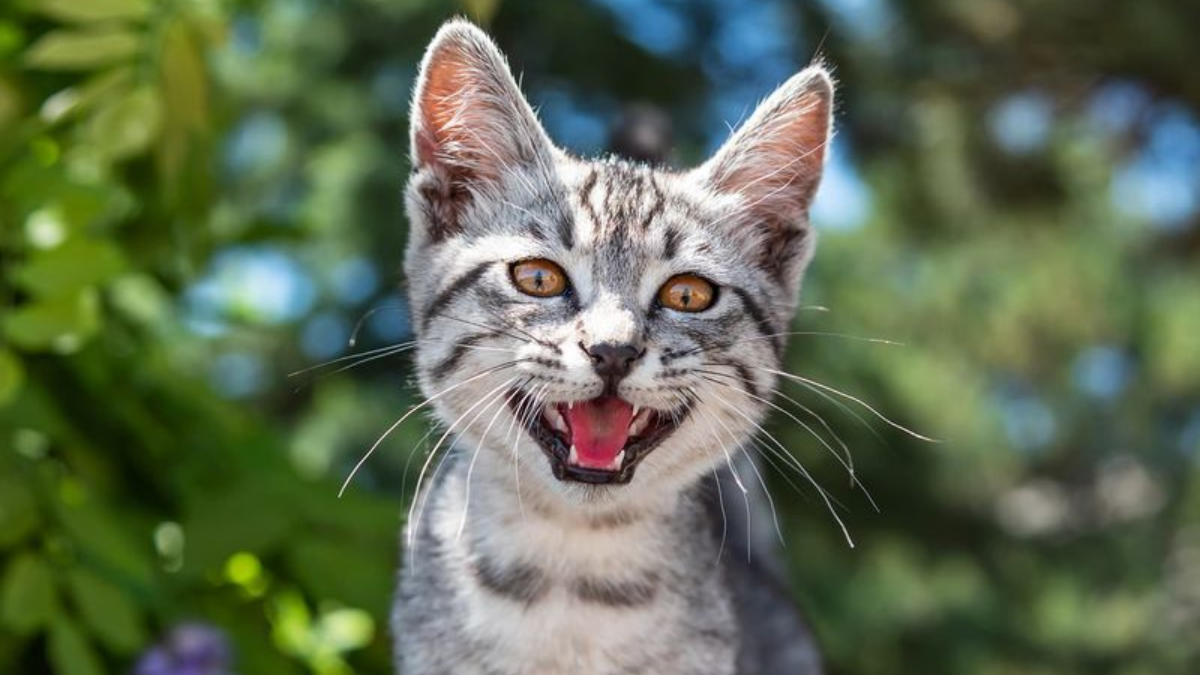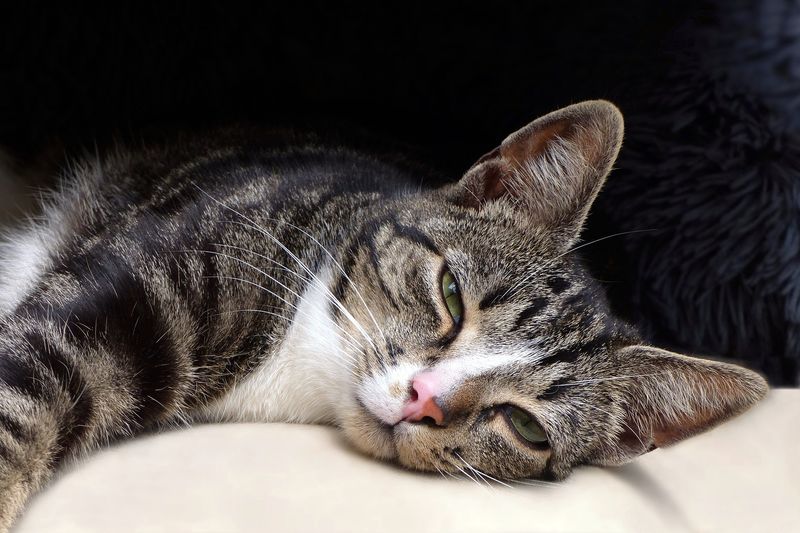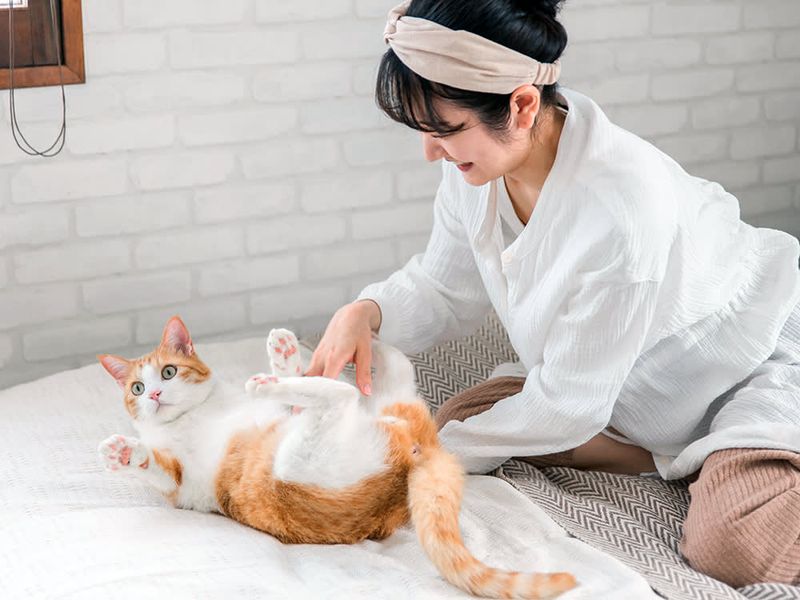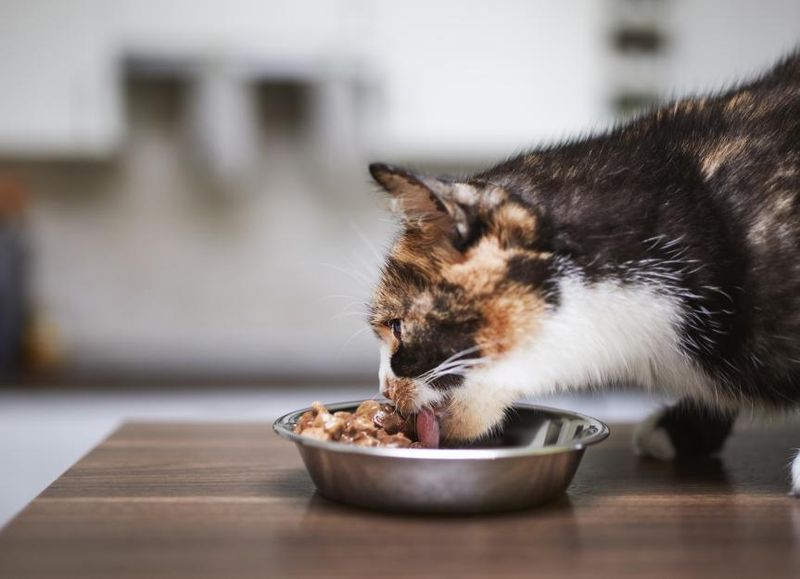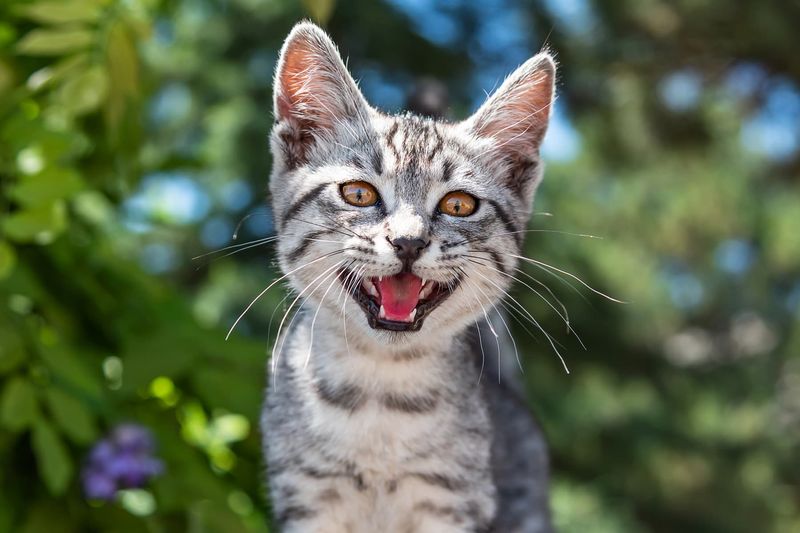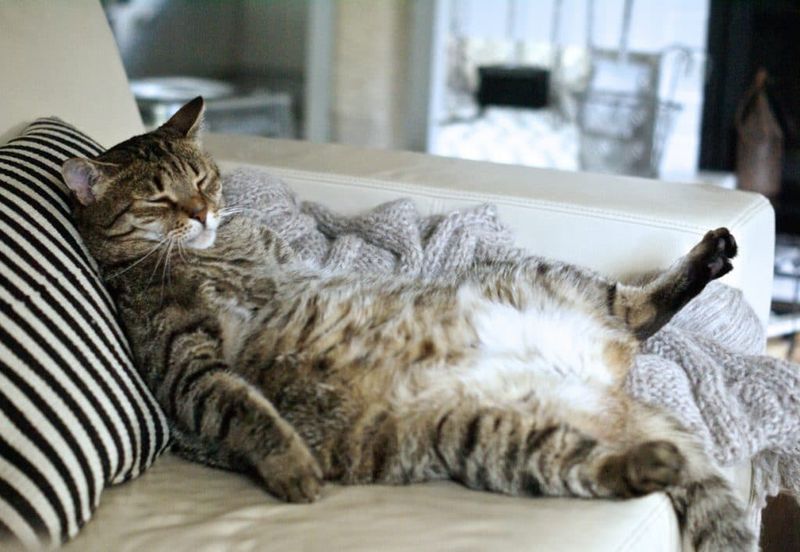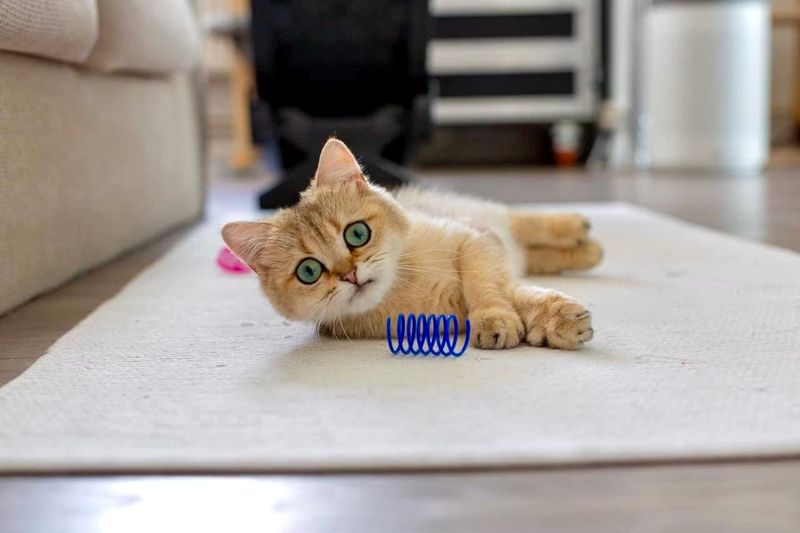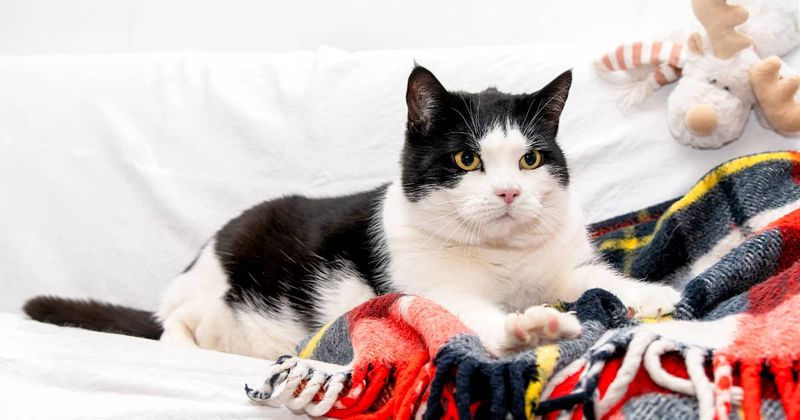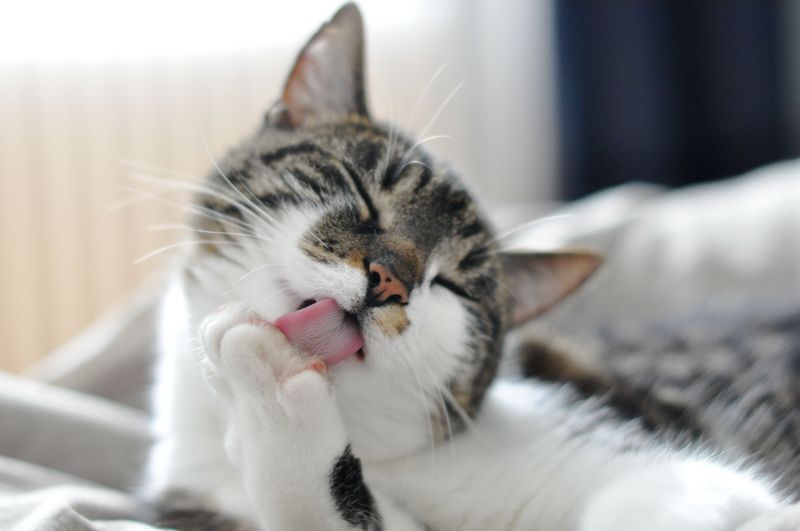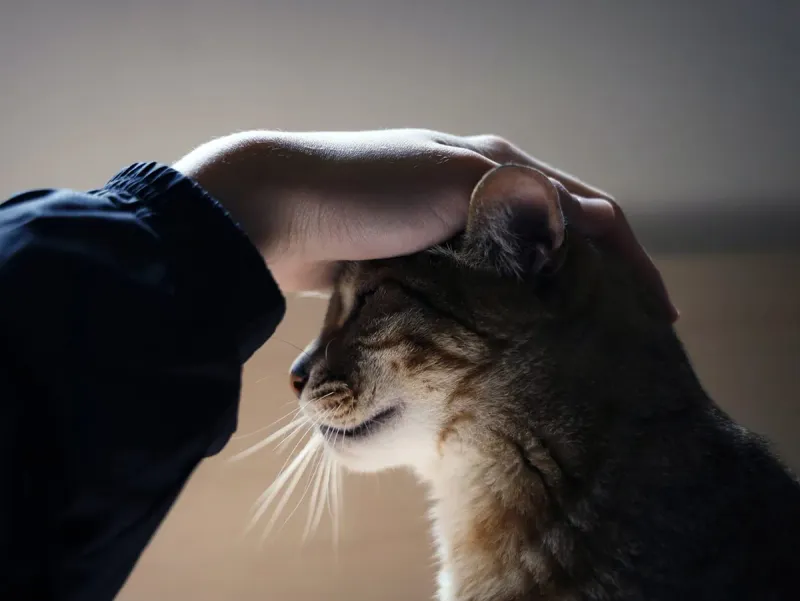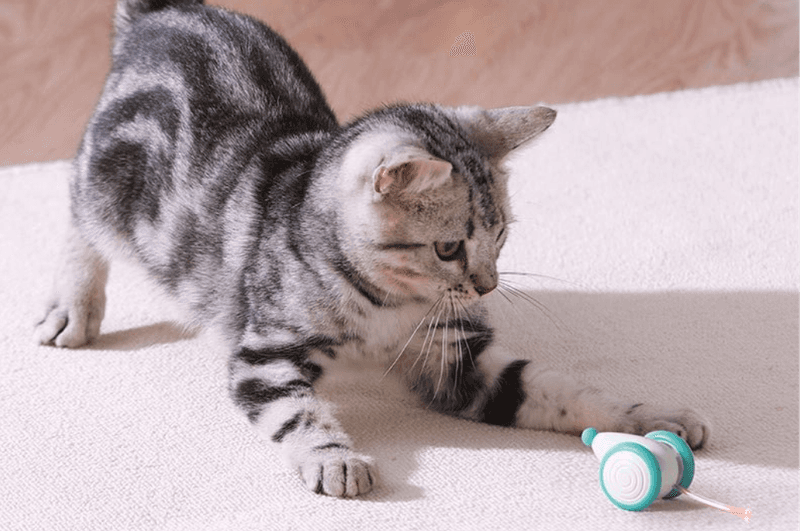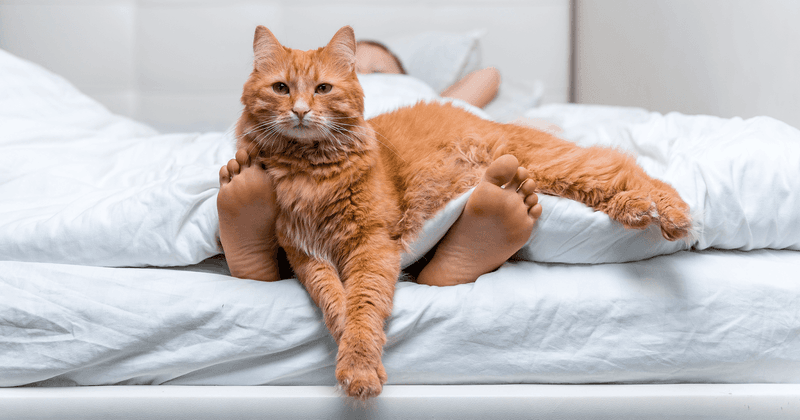📖 Table of Content:
- 1. Slow Blinks During Eye Contact
- 2. Belly Exposure Without Defense
- 3. Consistent Eating Habits
- 4. Vocal Greetings When You Return
- 5. Relaxed Sleeping Positions
- 6. Playful Behavior Even When Alone
- 7. Gentle Kneading Without Claws
- 8. Grooming In Your Presence
- 9. Seeking You Out For Comfort
- 10. Bringing You “Gifts”
- 11. Respecting Your Personal Space
Cats often keep their emotions well hidden, expressing how they feel through subtle behaviors. These quiet signals can easily be missed by those unfamiliar with feline communication. Recognizing these clues is key to understanding a cat’s true feelings.
When a cat feels safe and comfortable, it shows in small but meaningful ways. Body language, vocalizations, and even eye contact can all reveal their sense of security. Observing these signs helps deepen the connection between the cat and the owner.
Learning to read a cat’s hidden emotions not only improves their well-being but also enriches the relationship. It allows caregivers to respond appropriately and provide a nurturing environment. The result is a happier, healthier feline companion.
1. Slow Blinks During Eye Contact
Cats reserve their slow blinks for those they deeply trust. When your feline friend gazes at you and deliberately closes their eyes halfway, they’re essentially blowing you a kitty kiss! This gesture indicates they feel completely safe in your presence.
In the wild, closing eyes means vulnerability to predators. By choosing to briefly shut their eyes around you, your cat is saying, “I know you won’t hurt me while I’m vulnerable.”
Next time your cat slow-blinks at you, try returning the gesture. This simple communication builds trust and reinforces that your home is their sanctuary.
2. Belly Exposure Without Defense
Rolling over to show their belly is one of the greatest compliments your cat can give you. The stomach area houses vital organs and represents a cat’s most vulnerable spot. When they freely expose this area without tensing up, it signals complete trust in their environment.
Many cat owners misinterpret this gesture as an invitation for belly rubs. For some cats it is, but for others, it’s simply a declaration of feeling secure. Pay attention to their body language when you approach.
A relaxed cat will keep their paws loose rather than ready to grab or scratch if you come near their exposed tummy.
3. Consistent Eating Habits
When threatened, cats often pause before eating. If a cat sticks to its meal calmly and ignores sudden movements, it’s a sign of true comfort. Mealtime becomes a peaceful routine, not a race for safety.
Watch how your cat behaves during feeding time. Do they eat calmly, perhaps even turning their back to you? This positioning shows they don’t feel the need to guard their food or stay vigilant while eating.
Some especially secure cats might even prefer you to be nearby while they eat, showing they associate your presence with positive experiences rather than competition for resources.
4. Vocal Greetings When You Return
That special trill or chirp when you walk through the door isn’t just about dinner time. Cats who feel emotionally secure develop unique vocalizations specifically for their trusted humans. These sounds differ from meows used for strangers or other demands.
Listen for the musical quality in their greeting – it often has a rising inflection unlike their regular meows. This special hello indicates they’ve missed your presence and feel safe enough to express their excitement at your return.
Secure cats may even combine these vocalizations with physical greetings like rubbing against your legs or raising their tail high with a slight curve at the tip.
5. Relaxed Sleeping Positions
Sleep positions speak volumes about your cat’s emotional state. A curled-up ball with tucked limbs suggests vigilance, while a cat who sleeps sprawled out with limbs extended is displaying ultimate vulnerability and trust in their surroundings.
Particularly telling is when cats sleep with their backs to open spaces or doorways. In the wild, this position would be dangerous as it leaves them exposed to surprise attacks. At home, it demonstrates complete confidence in their safety.
The location matters too. Cats who feel secure often choose elevated spots or your personal spaces like your bed or desk chair, combining comfort with your familiar scent.
6. Playful Behavior Even When Alone
Cats reserve play for times when they feel absolutely secure. Finding toy mice batted around while you were gone or catching your cat in solo acrobatic sessions indicates they maintain their playful spirit even without your supervision.
Anxious cats remain on high alert, conserving energy for potential threats. A cat who feels safe enough to engage in play when alone shows they view your home as their protected territory.
Solo play also demonstrates healthy mental stimulation. Your cat feels comfortable enough to express natural hunting behaviors through pouncing, chasing, and wrestling with toys – clear signs of emotional well-being and security in their environment.
7. Gentle Kneading Without Claws
That rhythmic pushing of paws against soft surfaces stems from kittenhood nursing behavior. When adult cats knead with relaxed paws and retracted claws, they’re experiencing comfort similar to their earliest days with their mother cat.
The gentleness of this gesture matters. Cats who feel unsafe often keep their claws partially extended even during affectionate moments. Completely relaxed kneading indicates they associate you and your home with maternal safety and nourishment.
Some cats even drool slightly while kneading – another throwback to nursing contentment. This vulnerable behavior shows they’ve regressed to their most secure emotional state in your presence.
8. Grooming In Your Presence
Grooming demands a cat’s full focus, leaving them momentarily vulnerable to danger. When a cat relaxes and grooms near you, it shows a high level of trust in your presence. They feel safe enough to let their guard down around you.
Particularly meaningful is when cats groom vulnerable areas like their stomach or genital region in your presence. This behavior indicates they don’t perceive you as a potential threat during their most defenseless moments.
Social grooming takes this trust even further. If your cat occasionally licks your hand or hair, they’re treating you as part of their colony – the ultimate compliment from a species that’s selective about their social connections.
9. Seeking You Out For Comfort
During thunderstorms, fireworks, or other stressful events, where does your cat go? If they run to you rather than hiding under furniture, they’ve identified you as their safe haven. This behavior shows profound emotional security in your relationship.
Secure cats often press against their owners during frightening situations. The physical contact provides reassurance that transcends their instinct to isolate when threatened.
Some cats might not sit directly on you but will choose nearby perches to monitor your protective presence. Either way, their choice to stay in your orbit during scary moments reveals their deep trust in your ability to keep them safe.
10. Bringing You “Gifts”
Finding toy mice at your feet or waking up to your cat’s favorite sparkly ball on your pillow might seem random, but it’s actually a profound sign of trust. Cats bring objects they value to people and places where they feel emotionally secure.
This behavior mimics how mother cats teach hunting to kittens. By bringing you these “gifts,” your cat is treating you as family worthy of their prized possessions or hunting successes.
For outdoor cats, real prey offerings follow the same principle. Rather than seeing these presents as gross, recognize them as your cat’s way of contributing to what they perceive as your shared colony and safe territory.
11. Respecting Your Personal Space
Contrary to popular belief, cats who feel emotionally secure don’t always demand constant attention. A hallmark of a confident cat is their ability to respect boundaries while maintaining a comfortable presence nearby.
Secure cats might sit across the room watching you work or settle on a nearby shelf rather than directly on your keyboard. They understand you’re a permanent fixture in their territory and don’t fear you’ll disappear if they’re not constantly monitoring you.
This balanced independence demonstrates healthy attachment. Your cat knows they can approach for affection when needed, but also feels safe enough to pursue their own interests within your shared space.
